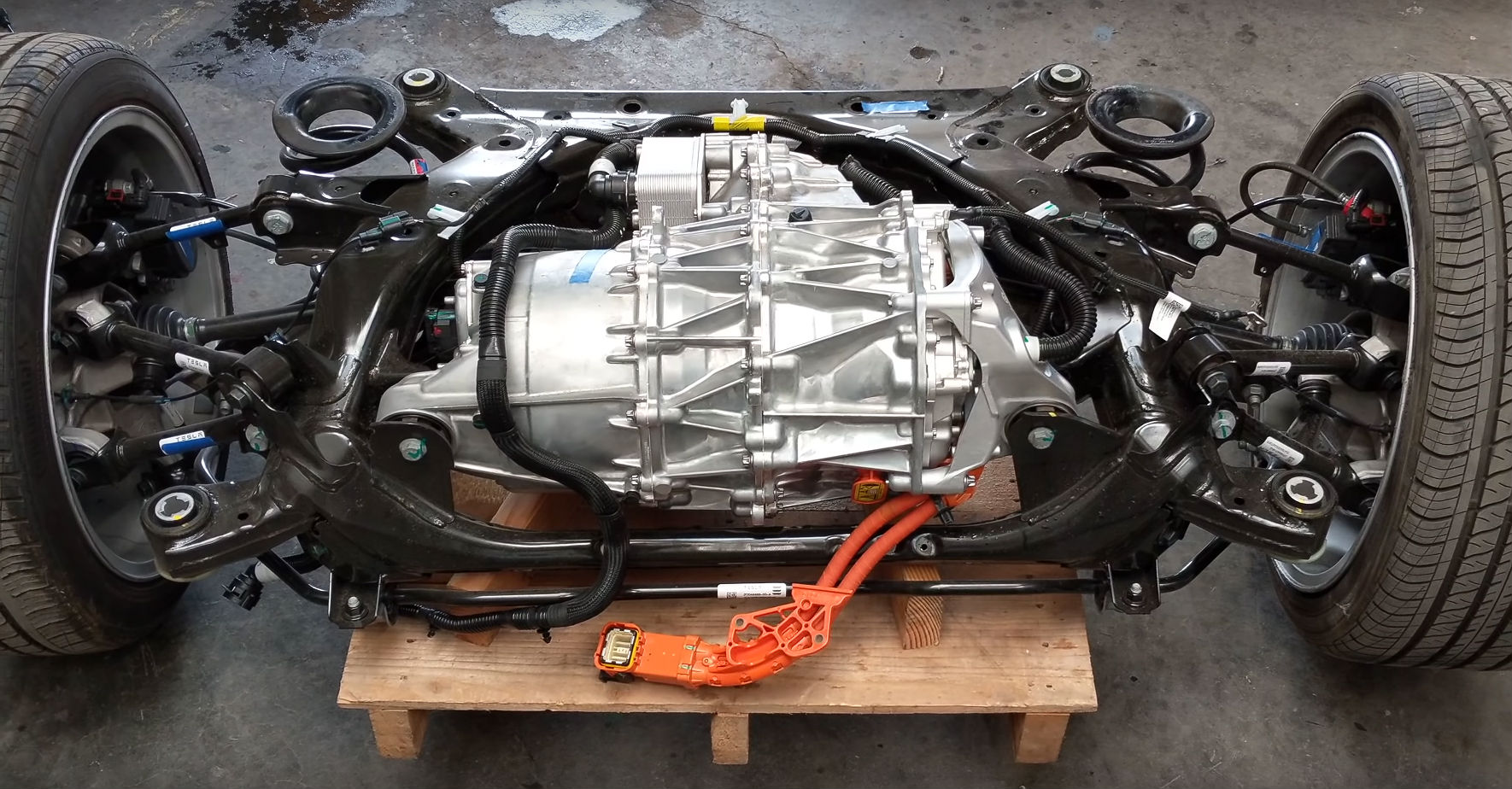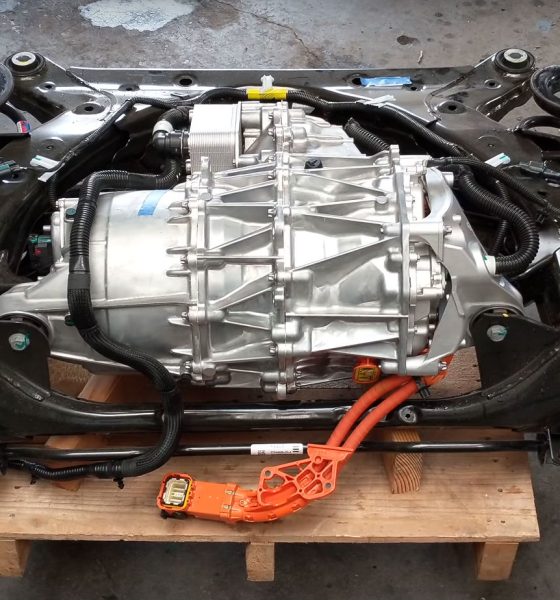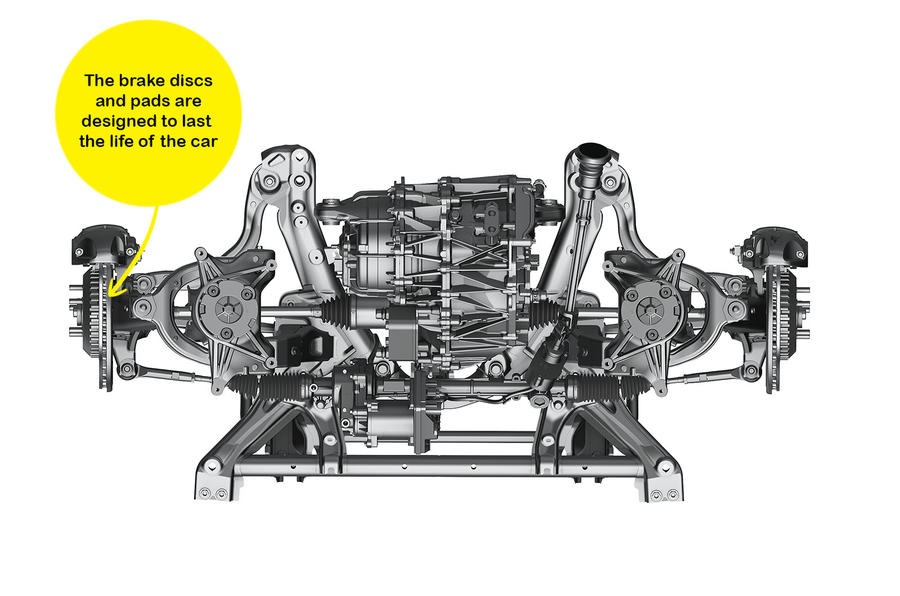

News
Tesla engineers share Model 3 steering, drivetrain, and suspension secrets
The Tesla Model 3 is practically taking over the electric car market, establishing a strong presence in every region where it is released. A key reason behind this lies in the fact that the Model 3 happens to be a really fine automobile that just happens to be electric. It’s quick on its feet, handles nimbly despite its weight, and it provides a ride that is both sporty and comfortable.
One of the UK’s most established motoring magazines, Autocar, spoke with a number of Tesla engineers to gain some insights on the design and development process of the Model 3. The result was an extensive discussion in how a clean-sheet design and a serious commitment to safety could make all the difference when creating a car that is, for all intents and purposes, intended to reinvent the automobile.
Tires
Immediately emphasized by the Tesla engineers was that the Model 3’s chassis and suspension were designed using a ‘first principles’ clean-sheet approach. This started with the Model 3’s tires, which the engineers fondly described as the “unsung heroes” of the vehicle, being critical to its feel and drivability. The development of the Model 3’s tires began back in 2015, when Tesla started working with manufacturers to create the ideal tires for the electric sedan.
The engineers noted that the tires of a high-performance electric car like the Model 3 are challenged in different ways compared to gas-powered automobiles. This is due to a number of factors, including the vehicle’s weight and its instant torque. Since the bulk of an EV’s mass is situated lower down compared to a vehicle with an internal combustion engine, there is less vertical force buildup on the outside pair of tires to generate grip when cornering.
To address this, Tesla focused on tread stiffness, even developing new compounds to deliver a good combination of cornering grip and low rolling resistance for the Model 3’s tires. Sound-absorbing foam placed inside the tire cavity further increases comfort during driving by suppressing noise. The Model 3’s rear wheels hold some interesting secrets as well. The engineers revealed that each rear wheel of the electric sedan has six degrees of freedom, with five links and one damper, though the links are split to allow superior control over forces that are transmitted through the vehicle’s tire contact patch.

Safety Systems and Steering
The Model 3 has earned a perfect 5-Star Safety Rating from the NHTSA, the Euro-NCAP, and the ANCAP. This comes as no surprise, considering that the vehicle is designed from the ground up to emphasize safety. The Model 3’s front suspension, for example, was specifically designed to provide maximum protection in small-overlap frontal collision crash tests.
Sacrificial links that are designed to snap when the front wheel and suspension get damaged are also integrated into the vehicle, allowing the Model 3’s front wheels to rotate. This moves the front wheels outside the Model 3’s body, while pushing the car, its occupants, and its battery pack from the point of impact. These safety systems extend to the Model 3’s dual-motor AWD variants as well.
Tesla designed the Model 3’s electric power steering system to have a rapid 10:1 ratio. The power steering is equipped with full redundancy with separate power feeds taken directly from the vehicle’s high-voltage battery. The engineers also mentioned two electronic modules and two inverters providing “hot backup” to the system if one fails.
Brakes
The Model 3’s braking system is quite unique, in the way that Tesla opted to equip the electric sedan with more expensive four-pot brake calipers at the front wheels instead of a single-piston sliding mechanism. This gives the Model 3 superior pedal response, and it opened the door for the electric car maker to design its own piston seals that fully retract the brake pads after braking; thus, boosting available driving range and cutting drag. Such a system adds to the Model 3’s efficiency, which has proven superior to other premium electric vehicles like the Audi e-tron and the Jaguar I-PACE.
Elon Musk has mentioned multiple times in the past that brake pads in a Tesla will last for the lifetime of a vehicle. This is no exaggeration, according to the Tesla engineers, who noted that the Model 3’s discs and brake pads are designed to last for around 150,000 miles. This is made possible by the Model 3’s regenerative braking system, which allows drivers to slow down the vehicle without using its physical brakes. As for rust issues, the engineers pointed out that Tesla has developed new anti-corrosion techniques for its electric cars.

Suspension
Perhaps the most interesting tidbit discussed by the Tesla engineers involved the Model 3’s suspension. In true Elon Musk fashion, Tesla actually used concepts from NASA when it was refining the suspension settings of the electric sedan. The electric car maker based the Model 3’s suspension settings on a study by the space agency about how long the human body can be subjected to a certain frequency without feeling uncomfortable. Considering that the vertical frequency of a suspension’s movement affects comfort and drivability, Tesla engineers settled on a vertical frequency that is equivalent to a brisk walk or a slow run to give the Model 3’s chassis a comfortable, sporty feel.
The Model 3’s suspension has impressed a number of industry experts, among them being automotive veteran and teardown expert Sandy Munro of Munro and Associates. During his teardown of the vehicle, Munro noted that the Model 3 has areas of improvement in its body and finish, but everything from the electric car’s suspension, all the way down to its tires, is flawless. In a segment on YouTube’s Autoline TV, Munro mentioned that the person who tuned the Model 3’s suspension could easily be an “F1 Prince.”
During the electric car maker’s second-quarter earnings call, Elon Musk mentioned that the “story for Tesla’s future is fundamentally Model 3 and Model Y.” While the Model S and Model X were made to prove that electric vehicles could be superior alternatives to gas-powered premium sedans and SUVs, the more affordable Model 3 — and in extension, the Model Y — would likely be the cars that could reinvent the automobile and encourage mass-market car buyers to rethink what a vehicle could be like. Based on the Model 3’s success so far, it appears that Tesla is so far succeeding in this endeavor.
H/T to JPR007.

News
Tesla is not sparing any expense in ensuring the Cybercab is safe
Images shared by the longtime watcher showed 16 Cybercab prototypes parked near Giga Texas’ dedicated crash test facility.

The Tesla Cybercab could very well be the safest taxi on the road when it is released and deployed for public use. This was, at least, hinted at by the intensive safety tests that Tesla seems to be putting the autonomous two-seater through at its Giga Texas crash test facility.
Intensive crash tests
As per recent images from longtime Giga Texas watcher and drone operator Joe Tegtmeyer, Tesla seems to be very busy crash testing Cybercab units. Images shared by the longtime watcher showed 16 Cybercab prototypes parked near Giga Texas’ dedicated crash test facility just before the holidays.
Tegtmeyer’s aerial photos showed the prototypes clustered outside the factory’s testing building. Some uncovered Cybercabs showed notable damage and one even had its airbags engaged. With Cybercab production expected to start in about 130 days, it appears that Tesla is very busy ensuring that its autonomous two-seater ends up becoming the safest taxi on public roads.
Prioritizing safety
With no human driver controls, the Cybercab demands exceptional active and passive safety systems to protect occupants in any scenario. Considering Tesla’s reputation, it is then understandable that the company seems to be sparing no expense in ensuring that the Cybercab is as safe as possible.
Tesla’s focus on safety was recently highlighted when the Cybertruck achieved a Top Safety Pick+ rating from the Insurance Institute for Highway Safety (IIHS). This was a notable victory for the Cybertruck as critics have long claimed that the vehicle will be one of, if not the, most unsafe truck on the road due to its appearance. The vehicle’s Top Safety Pick+ rating, if any, simply proved that Tesla never neglects to make its cars as safe as possible, and that definitely includes the Cybercab.
Elon Musk
Tesla’s Elon Musk gives timeframe for FSD’s release in UAE
Provided that Musk’s timeframe proves accurate, FSD would be able to start saturating the Middle East, starting with the UAE, next year.

Tesla CEO Elon Musk stated on Monday that Full Self-Driving (Supervised) could launch in the United Arab Emirates (UAE) as soon as January 2026.
Provided that Musk’s timeframe proves accurate, FSD would be able to start saturating the Middle East, starting with the UAE, next year.
Musk’s estimate
In a post on X, UAE-based political analyst Ahmed Sharif Al Amiri asked Musk when FSD would arrive in the country, quoting an earlier post where the CEO encouraged users to try out FSD for themselves. Musk responded directly to the analyst’s inquiry.
“Hopefully, next month,” Musk wrote. The exchange attracted a lot of attention, with numerous X users sharing their excitement at the idea of FSD being brought to a new country. FSD (Supervised), after all, would likely allow hands-off highway driving, urban navigation, and parking under driver oversight in traffic-heavy cities such as Dubai and Abu Dhabi.
Musk’s comments about FSD’s arrival in the UAE were posted following his visit to the Middle Eastern country. Over the weekend, images were shared online of Musk meeting with UAE Defense Minister, Deputy Prime Minister, and Dubai Crown Prince HH Sheikh Hamdan bin Mohammed. Musk also posted a supportive message about the country, posting “UAE rocks!” on X.
FSD recognition
FSD has been getting quite a lot of support from foreign media outlets. FSD (Supervised) earned high marks from Germany’s largest car magazine, Auto Bild, during a test in Berlin’s challenging urban environment. The demonstration highlighted the system’s ability to handle dense traffic, construction sites, pedestrian crossings, and narrow streets with smooth, confident decision-making.
Journalist Robin Hornig was particularly struck by FSD’s superior perception and tireless attention, stating: “Tesla FSD Supervised sees more than I do. It doesn’t get distracted and never gets tired. I like to think I’m a good driver, but I can’t match this system’s all-around vision. It’s at its best when both work together: my experience and the Tesla’s constant attention.” Only one intervention was needed when the system misread a route, showcasing its maturity while relying on vision-only sensors and over-the-air learning.
News
Tesla quietly flexes FSD’s reliability amid Waymo blackout in San Francisco
“Tesla Robotaxis were unaffected by the SF power outage,” Musk wrote in his post.

Tesla highlighted its Full Self-Driving (Supervised) system’s robustness this week by sharing dashcam footage of a vehicle in FSD navigating pitch-black San Francisco streets during the city’s widespread power outage.
While Waymo’s robotaxis stalled and caused traffic jams, Tesla’s vision-only approach kept operating seamlessly without remote intervention. Elon Musk amplified the clip, highlighting the contrast between the two systems.
Tesla FSD handles total darkness
The @Tesla_AI account posted a video from a Model Y operating on FSD during San Francisco’s blackout. As could be seen in the video, streetlights, traffic signals, and surrounding illumination were completely out, but the vehicle drove confidently and cautiously, just like a proficient human driver.
Musk reposted the clip, adding context to reports of Waymo vehicles struggling in the same conditions. “Tesla Robotaxis were unaffected by the SF power outage,” Musk wrote in his post.
Musk and the Tesla AI team’s posts highlight the idea that FSD operates a lot like any experienced human driver. Since the system does not rely on a variety of sensors and a complicated symphony of factors, vehicles could technically navigate challenging circumstances as they emerge. This definitely seemed to be the case in San Francisco.
Waymo’s blackout struggles
Waymo faced scrutiny after multiple self-driving Jaguar I-PACE taxis stopped functioning during the blackout, blocking lanes, causing traffic jams, and requiring manual retrieval. Videos shared during the power outage showed fleets of Waymo vehicles just stopping in the middle of the road, seemingly confused about what to do when the lights go out.
In a comment, Waymo stated that its vehicles treat nonfunctional signals as four-way stops, but “the sheer scale of the outage led to instances where vehicles remained stationary longer than usual to confirm the state of the affected intersections. This contributed to traffic friction during the height of the congestion.”
A company spokesperson also shared some thoughts about the incidents. “Yesterday’s power outage was a widespread event that caused gridlock across San Francisco, with non-functioning traffic signals and transit disruptions. While the failure of the utility infrastructure was significant, we are committed to ensuring our technology adjusts to traffic flow during such events,” the Waymo spokesperson stated, adding that it is “focused on rapidly integrating the lessons learned from this event, and are committed to earning and maintaining the trust of the communities we serve every day.”








